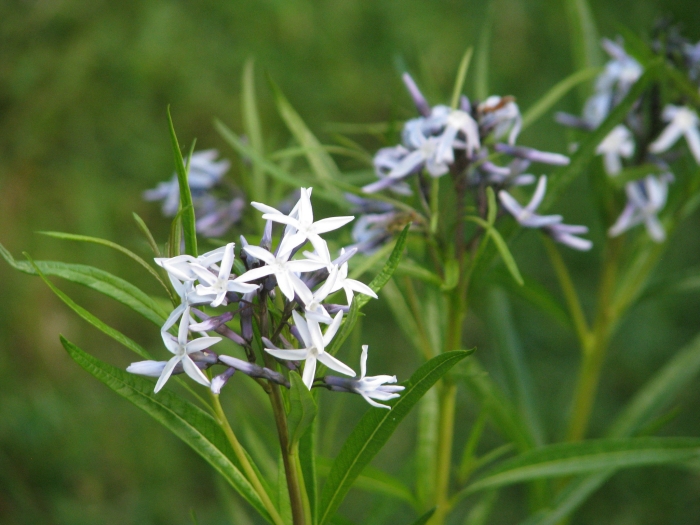Hubricht’s Bluestar
(Amsonia hubrichtii)
Hubricht’s Bluestar (Amsonia hubrichtii)
/
/

peganum
CC BY-SA 2.0
Image By:
peganum
Recorded By:
Copyright:
CC BY-SA 2.0
Copyright Notice:
Photo by: peganum | License Type: CC BY-SA 2.0 | License URL: https://creativecommons.org/licenses/by/2.0/ | Uploader: peganum | Publisher: Flickr |

























Estimated Native Range
Summary
Amsonia hubrichtii, commonly known as Hubricht’s bluestar, is a perennial herb native to the Ouachita Mountains and adjacent areas in Oklahoma and Arkansas, where it thrives in open woodlands and prairies. This species, a member of the dogbane family, was first described in 1943. It typically grows to a height of 2-3 feet (0.6-0.9 meters) and spreads 2-3 feet (0.6-0.9 meters) wide. The plant features feathery, fine-textured foliage that turns a stunning golden-yellow in the fall. In late spring to early summer, pale blue, star-shaped flowers bloom in clusters, adding a soft, yet showy aspect to garden settings.
Hubricht’s bluestar is valued for its season-long interest, starting with blue flowers in the spring, followed by fine-textured green foliage in the summer, and culminating with bright yellow fall color. It is commonly used in borders, native plant gardens, and as a mass planting for a dramatic effect. This plant is adaptable to various soil types, provided they have medium drainage, and it is relatively drought-tolerant once established. It prefers full sun to part shade and requires medium amounts of water. While generally pest and disease-free, it can be susceptible to rust in overly moist conditions. Hubricht’s bluestar is not known for being invasive and is considered a low-maintenance addition to the garden.CC BY-SA 4.0
Hubricht’s bluestar is valued for its season-long interest, starting with blue flowers in the spring, followed by fine-textured green foliage in the summer, and culminating with bright yellow fall color. It is commonly used in borders, native plant gardens, and as a mass planting for a dramatic effect. This plant is adaptable to various soil types, provided they have medium drainage, and it is relatively drought-tolerant once established. It prefers full sun to part shade and requires medium amounts of water. While generally pest and disease-free, it can be susceptible to rust in overly moist conditions. Hubricht’s bluestar is not known for being invasive and is considered a low-maintenance addition to the garden.CC BY-SA 4.0
Plant Description
- Plant Type: Herb
- Height: 2-3 feet
- Width: 2-3 feet
- Growth Rate: Slow
- Flower Color: Blue
- Flowering Season: Spring
- Leaf Retention: Deciduous
Growth Requirements
- Sun: Full Sun, Part Shade
- Water: Medium
- Drainage: Medium
Common Uses
Bank Stabilization, Bee Garden, Bird Garden, Border Plant, Butterfly Garden, Deer Resistant, Drought Tolerant, Groundcover, Hummingbird Garden, Low Maintenance, Rabbit Resistant, Rock Garden, Showy Flowers, Street Planting
Natural Habitat
Native to open woodlands and prairies in the Ouachita Mountains and adjacent areas in Oklahoma and Arkansas
Other Names
Common Names: Arkansas Bluestar, Threadleaf Bluestar, Arkansas Amsonia
Scientific Names: , Amsonia hubrichtii,
GBIF Accepted Name: Amsonia hubrichtii Woodson